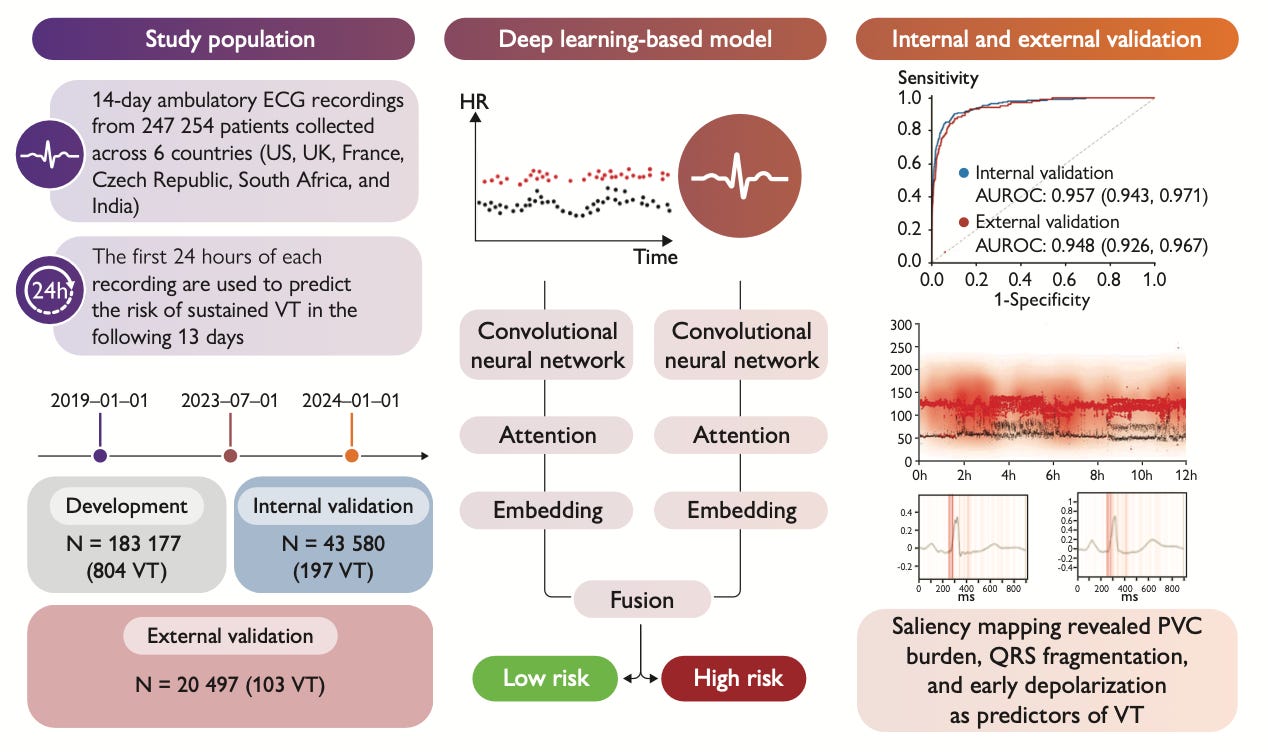AI to Predict Near-Term Sustained Ventricular Arrhythmias
Fighting that losing battle against sensitivity and specificity?
Sudden cardiac death due to malignant ventricular arrhythmia is, for obvious reasons, best avoided. However, the typical approach – absent obvious electrical aberration – relies upon ejection fraction for risk-stratification.
Let’s see if AI can do better! (the rallying cry of 2025)
This group – employed primarily at cardiac medical device companies – attempts to use a single-lead ECG recording to predict episodes of sustained ventricular tachycardia within 13 days of an initial 24-hour index recording. Their study infographic looks like this:
Fairly straightforward, and the AUROC of ~0.950 seems quite excellent, no?
But, then, the problem of clinical translation. The authors have picked a specificity of 97% as their supposedly useable set point – and at those levels, sensitivity is merely in the 50% range. These specific choices create issues relating to disease prevalence – as, in their demonstration, the tool flags primarily false positives (PPV ~10%) while missing half the potential poor outcomes with that suboptimal sensitivity.
However, these sorts of models can be calibrated based on clinical need – and it does not seem so farfetched to conceive an individualized tuning of this model as a component of a larger risk-stratification process.

